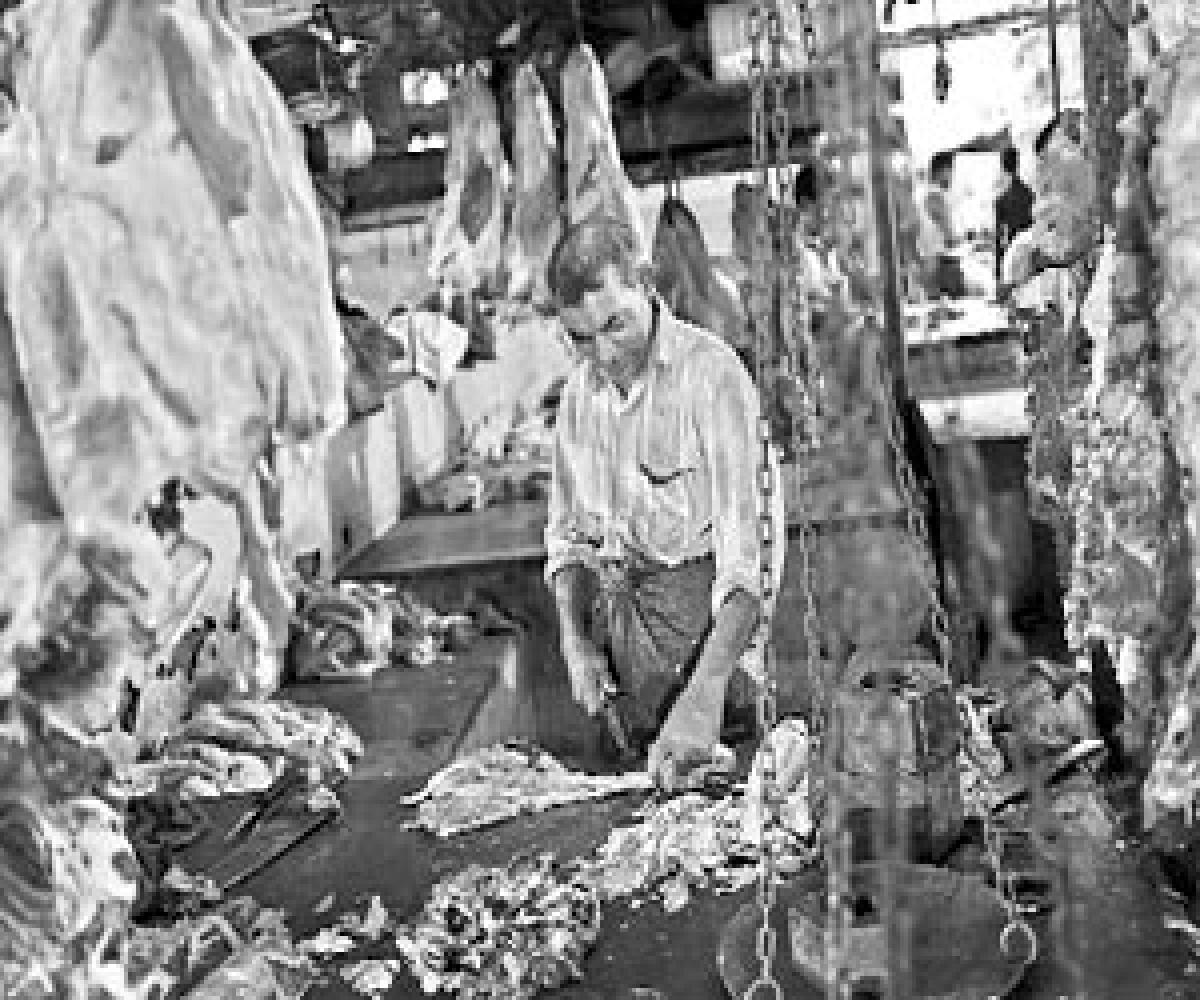Live
- Online Gold Loans: A Quick Solution for Urgent Financial Needs
- Odisha holds successful mega investors roadshow in Singapore
- PGTI Tour: Top stars to fight for honours in Servo Masters Golf
- SC upholds termination of LIC employee for absenting himself without intimation
- ‘Stone me or shoot me, won’t spare anyone,’ says Anil Deshmukh after discharge
- Siddaramaiah, Shivakumar turning Karnataka into Pakistan: K’taka BJP
- Zimbabwe records 70 suspected cholera cases, one death amid new outbreak
- Babri demolition day: No Assembly proceedings in Bengal on Dec 6
- Typhoon Man-yi suspends ferries, submerges streets in China
- 2400 youths get jobs with big firms under NSDC scheme
Just In

The closure of Uttar Pradesh\'s slaughterhouses could leave a couple of million people jobless in the state, affect its allied industries and choke
Important revenue stream for farmers set to dry up
The closure of Uttar Pradesh's slaughterhouses could leave a couple of million people jobless in the state, affect its allied industries and choke small but important revenue streams for its poor farmers, especially in drought-prone areas, according to an IndiaSpend analysis of available data on India's meat, leather and livestock industries.
Half of Uttar Pradesh's licensed slaughterhouses and scores of illegal ones have been closed after an order from new Chief Minister Aditya Nath Yogi against those that do not follow the law.
The drive against slaughterhouses could impact three critical industries: Meat packaging, livestock and leather. With some of the worst development indicators, stagnant agriculture and industry, India's most populous state is also one of its poorest with the second-highest unemployment rate – after Jharkhand – among eight most socio-economically backward states.
With a population of 200 million people, equivalent to the population of Brazil, the state's economy is the size of the tiny middle-eastern country of Qatar, which has 2.4 million people, the same as the town of Bijnore.
In 2015-16, more people per 1,000 were unemployed in Uttar Pradesh (58), compared to the Indian average (37), and youth unemployment was especially high, with 148 for every 1,000 people between the ages of 18 and 29 years unemployed, compared to the Indian average of 102.
Meat-packing and leather industries make up the major share of India's export earnings, with Uttar Pradesh contributing significantly. It accounted for nearly 43 per cent of buffalo-meat exports in 2015-16, the highest among all states, according to data published by the Agriculture and Processed Food Export Development Authority (APEDA).
Leather ranks eighth among India's top export earners, with about 46 per cent of what is produced being exported, according to the Council for Leather Exports (CLE). A third of these exports go from Kanpur in UP, a city where the leather industry is already in crisis.
The BJP's election manifesto for the assembly election had promised to shut all illegal slaughterhouses in the state. But "over-enthusiastic" officials – who appeared to be acting indiscriminately, shutting down even abattoirs with licenses – are now being reined in by the government, according to some media reports. IndiaSpend research shows that the slaughterhouse ecology is complex and supports diverse, rural and urban economic and social systems not just in Uttar Pradesh, but nationwide. Here is a look at the three industries that will be most affected by the campaign.
1. Meat: UP accounts for 43% of India's buffalo-meat exports Illegal slaughterhouses being targeted by the government dominate the meat market in India: 4,000 are registered and more than 25,000 are not, among units that cater to the domestic market, according to APEDA.
Buffalo meat is a major export from India, going to more than 40 countries. In the 2015-16, Uttar Pradesh recorded the highest buffalo meat export, followed by Maharashtra. In 2015-16, India exported 13.14 lakh metric tonnes (MT) buffalo meat of worth Rs 26,685.42 crore.
There is no reliable estimate of people employed in Uttar Pradesh's slaughterhouses and meat shops, but it is likely to be in tens of thousands. Around 6.7 million are employed in the country's food-processing industry, which includes slaughterhouses and meat processing units, according to the Agriculture Statistics, 2015.
2. Livestock: UP recorded 14% growth, indicating economic dependence Meat production is entirely dependent on livestock, a sector that contributed nearly 4.11 per cent to India's GDP at current prices in 2012-13, according to the Livestock Census Report, 2012.
India houses a significant percentage of the world's livestock. A comparison of the last two livestock censuses reveals a 3.33 per cent decrease in livestock in 2012 compared to 2007. But Uttar Pradesh, along with Gujarat and Assam, registered growth (14 per cent), indicating the economy's dependence on livestock and allied businesses.
Livestock are an important economic resource, especially in rural areas. Cattle, buffalo, goat and sheep are maintained by agricultural families, mostly those with small land holdings, and by landless labourers who use them primarily for milk and also meat. Cattle are also loaned for agriculture and transportation. Poor families sell stray cattle to butchers. In drought-affected areas, such as parts of Maharashtra, Karnataka, Madhya Pradesh and Uttar Pradesh, cattle are often sold to tide over economic crises.
3. Leather: Majority of employees from disadvantaged communities In 2014-15, India leather exports were valued at $6.4 billion (Rs 39,097 crore) and in 2015-16, at $5.8 billion (Rs 38,396 crore), according to Council for Leather Exports data.
The Indian leather industry provides formal and informal employment to 2.5 million people, mostly from disadvantaged communities: A third of leather workers are women and a fourth are scheduled castes and tribes. Leather workers who are not from traditional tanning communities or are not Muslims come from poor agricultural families, according to a study by the Centre for Education and Communication (CEC), an advocacy.
(In arrangement with IndiaSpend.org)

© 2024 Hyderabad Media House Limited/The Hans India. All rights reserved. Powered by hocalwire.com







